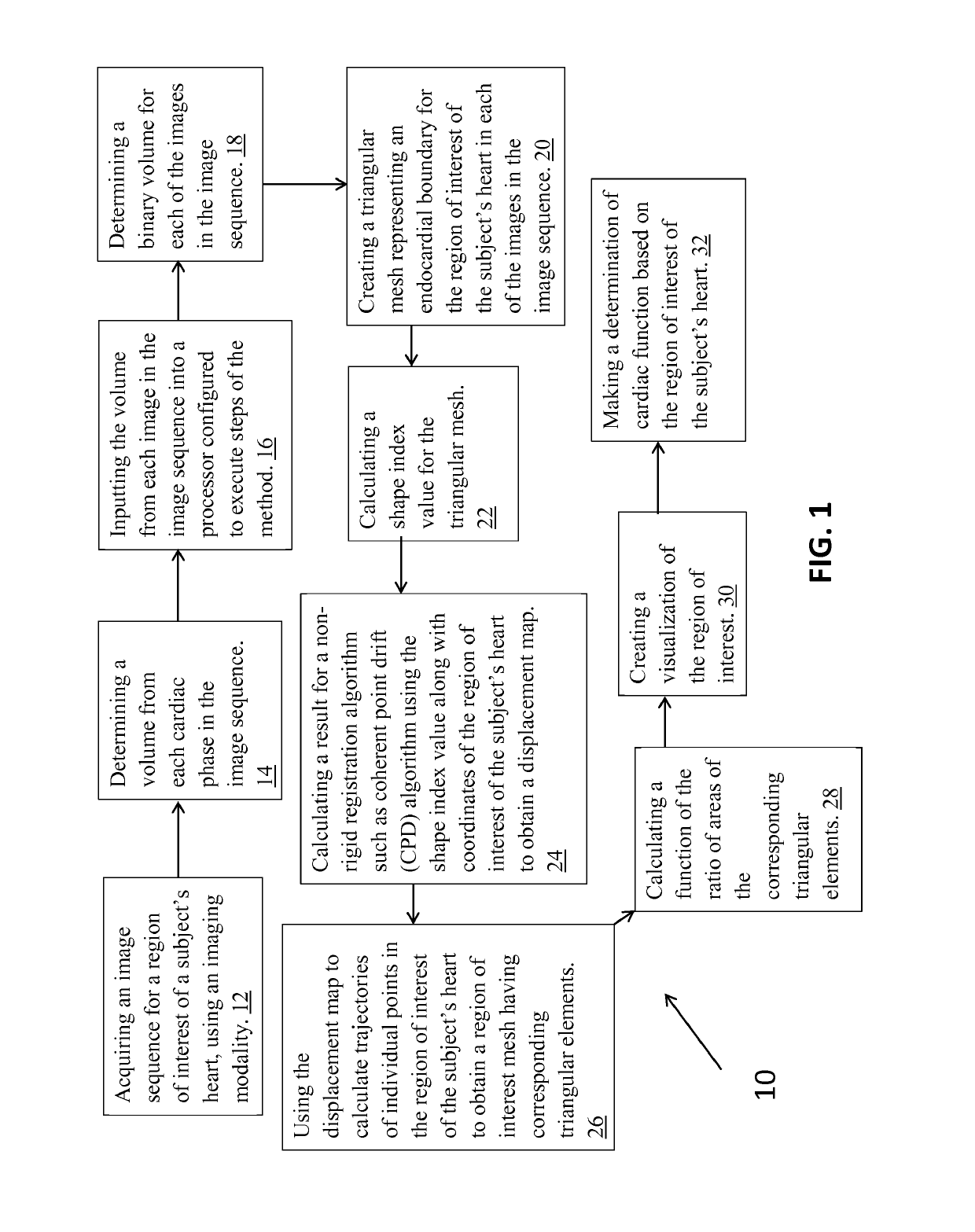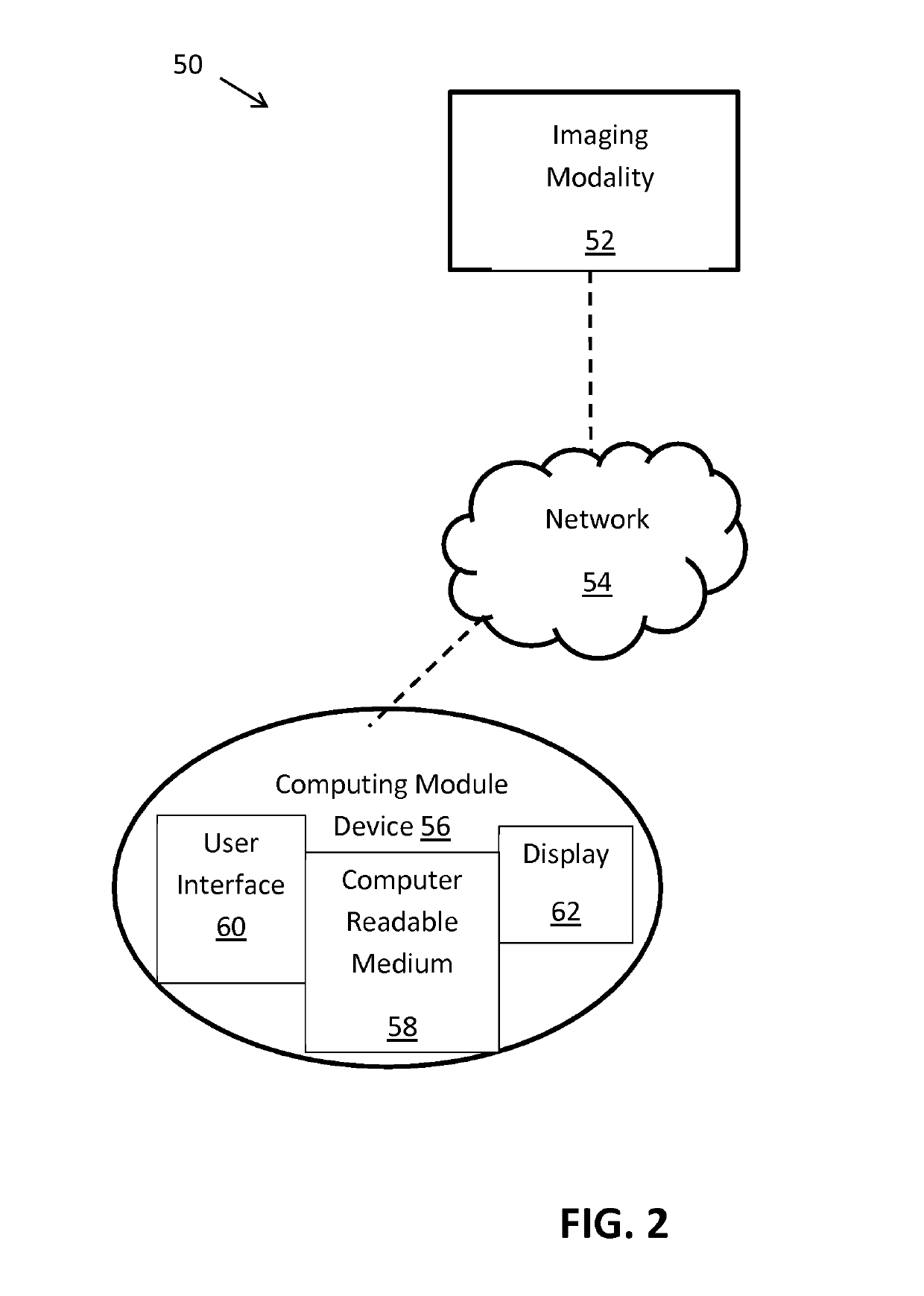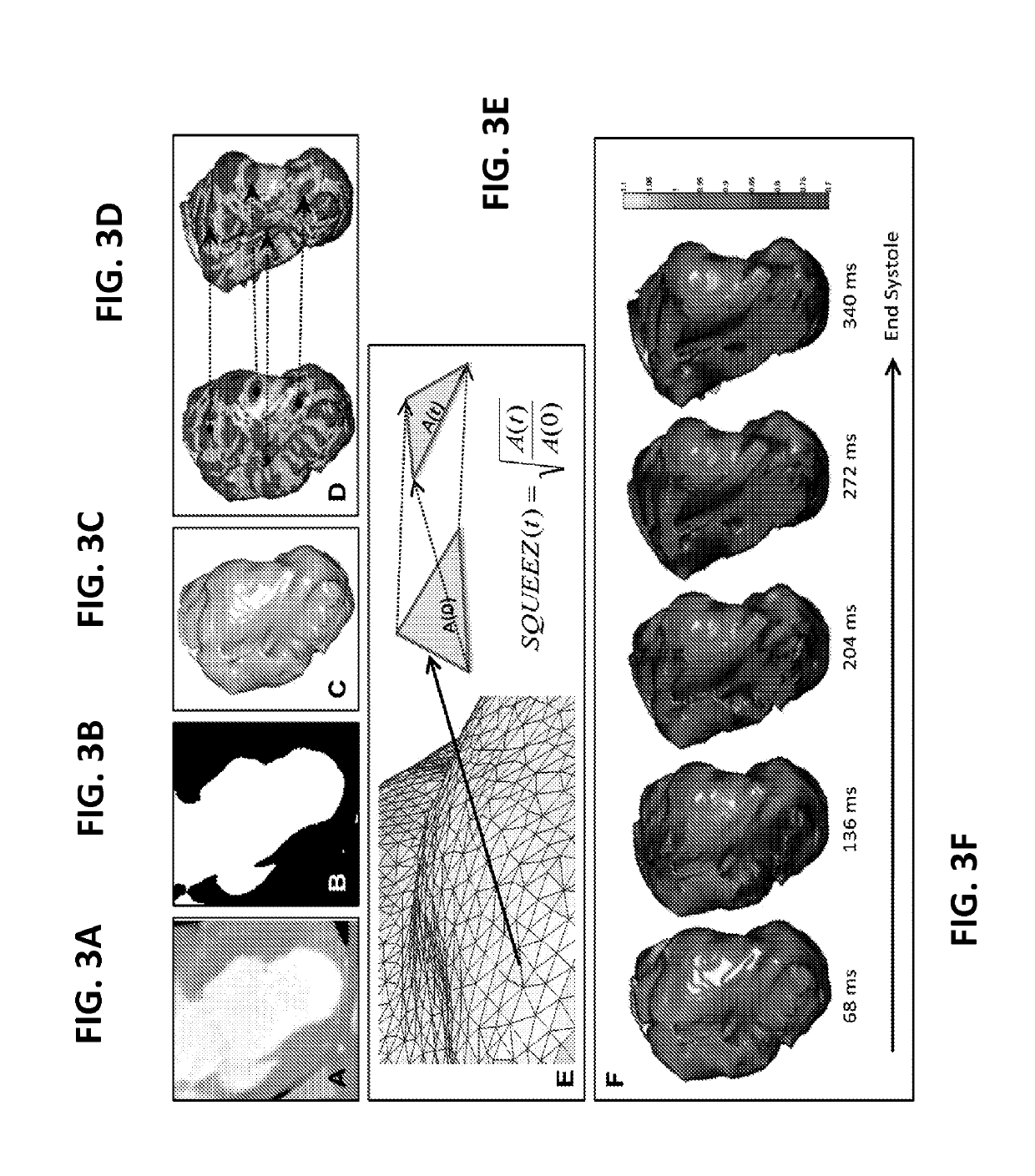Methods for evaluating regional cardiac function and dyssynchrony from a dynamic imaging modality using endocardial motion
a dynamic imaging and dyssynchrony technology, applied in the field of imaging modalities, can solve the problems of poor resolution, inability to obtain adequate landmarks in the heart, and inability to produce imaging modalities
- Summary
- Abstract
- Description
- Claims
- Application Information
AI Technical Summary
Benefits of technology
Problems solved by technology
Method used
Image
Examples
example
[0042]The following example is included merely as an illustration of the present method and is not intended to be considered limiting. This example is one of many possible applications of the methods described above. Any other suitable application of the above described methods known to or conceivable by one of skill in the art could also be created and used. While this example is directed to analysis of left ventricular function, any suitable region of interest can be studied.
[0043]Pigs with chronic myocardial infarctions (MIs) were used in the experiment. Briefly, MI was induced by engaging the left anterior descending coronary artery (LAD) with an 8F hockey stick catheter under fluoroscopic guidance. Then, a 0.014-in angioplasty guidewire was inserted into the LAD, and a 2.5×12-mm Maverick balloon (Boston Scientific) was inflated to 4 atm just distal to the second diagonal branch of the LAD. After 120 minutes, occlusion of the vessel was terminated by deflating the balloon, and r...
PUM
 Login to View More
Login to View More Abstract
Description
Claims
Application Information
 Login to View More
Login to View More - R&D
- Intellectual Property
- Life Sciences
- Materials
- Tech Scout
- Unparalleled Data Quality
- Higher Quality Content
- 60% Fewer Hallucinations
Browse by: Latest US Patents, China's latest patents, Technical Efficacy Thesaurus, Application Domain, Technology Topic, Popular Technical Reports.
© 2025 PatSnap. All rights reserved.Legal|Privacy policy|Modern Slavery Act Transparency Statement|Sitemap|About US| Contact US: help@patsnap.com



